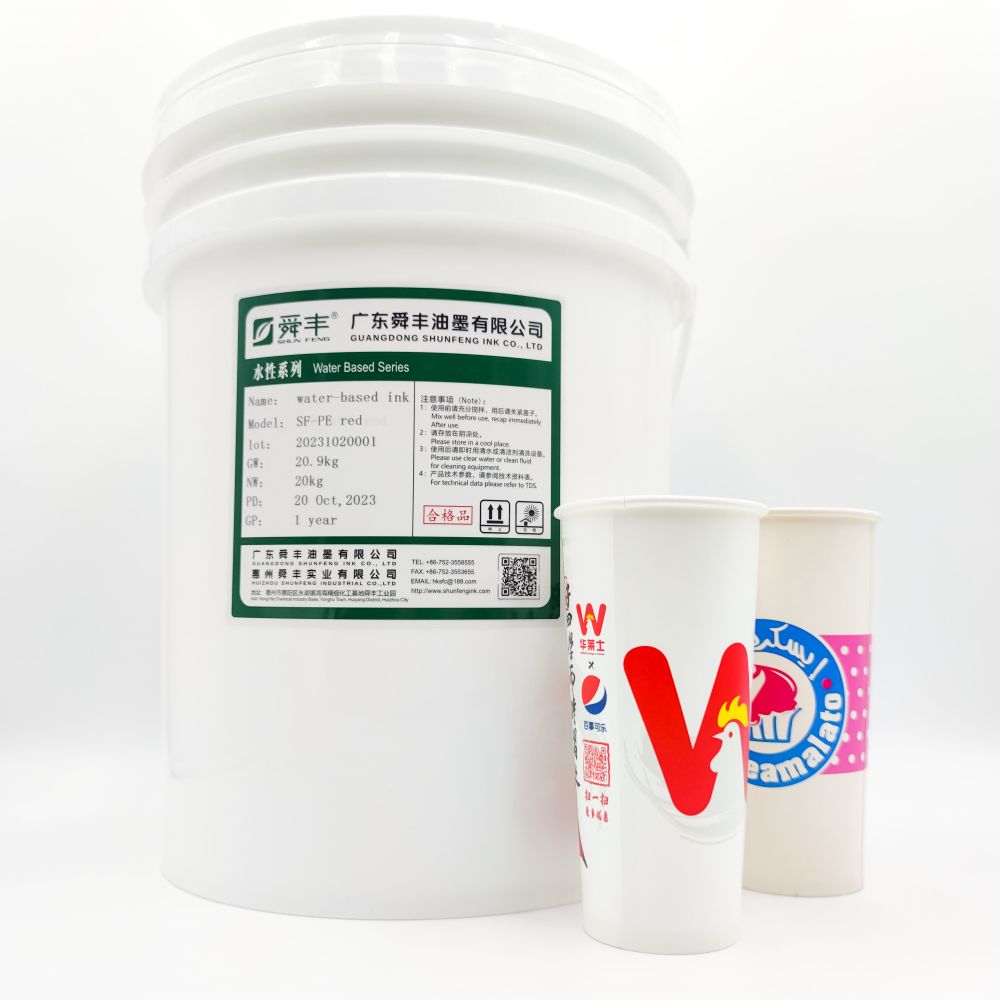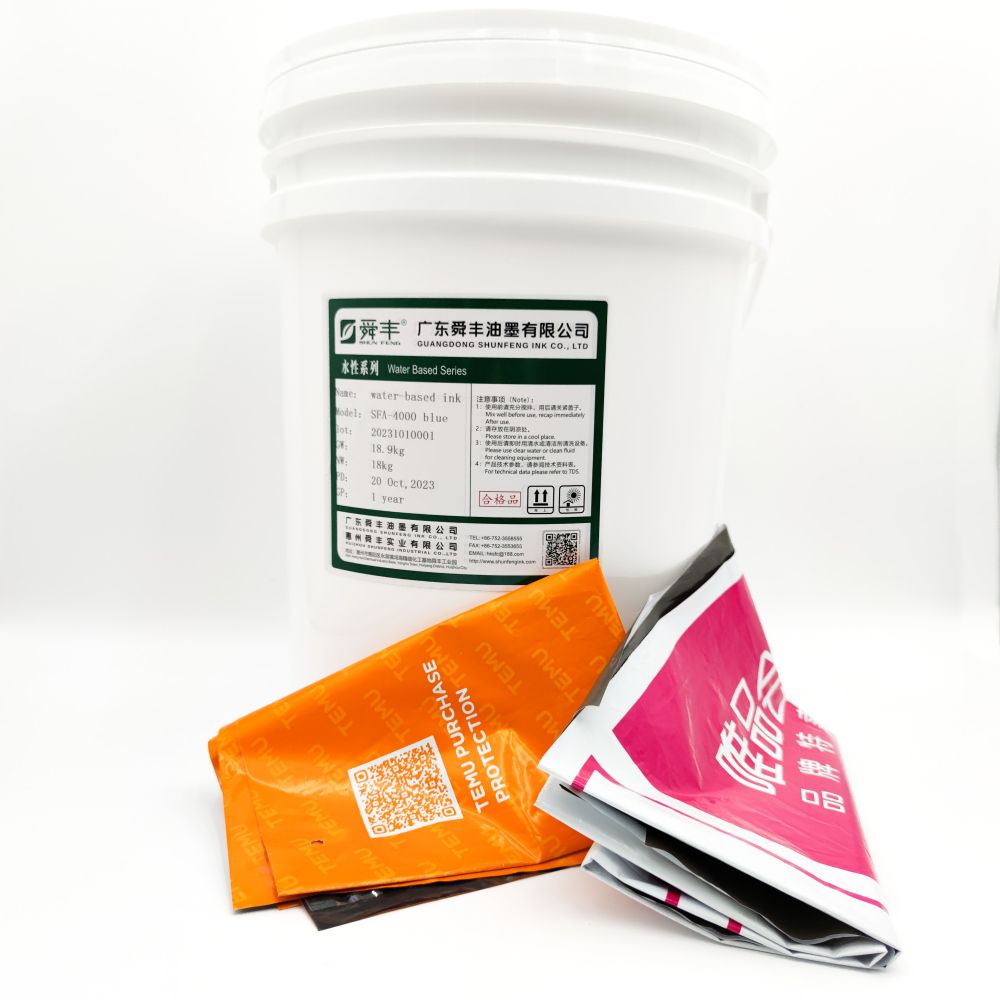Exploring the Development of Water-Based Inks and the Study of Eco-Friendly Water-Based Polyurethane Inks
Air pollution has long been a major concern, with toxic gas emissions such as VOCs being significant contributors alongside natural phenomena like dust storms. As awareness of environmental protection grows and various national policies are implemented, the printing industry, a major VOC emitter, has faced inevitable reform. Consequently, eco-friendly printing inks have become a focal point in global printing industry research. Among the available eco-friendly inks, including water-based inks, energy-curable inks, and vegetable oil-based inks, water-based inks are the most widely used. Water-based inks contain a lower proportion of organic solvents, reducing VOC emissions and aligning with environmental protection principles. However, water-based inks also have drawbacks such as slow drying and curing times and poor water and alkali resistance, limiting their application in traditional industrial inks. Thus, improving these weaknesses through resin modification has become a significant focus. This paper outlines the development and application of water-based inks, the study of resin modifications, the progress in research on printing inks using water-based polyurethanes, and the future prospects in this field.
- Experimental
- Development of Water-Based Inks
Inks have a long history, emerging alongside the invention of printing. After the introduction of Lithol Red Pigment in 1900, inks became widespread, prompting countries to invest in ink research. Water-based inks are a derivative resulting from higher demands for ink practicality. Research on water-based inks began abroad in the 1960s, primarily to speed up printing rates and reduce reliance on petroleum-based raw materials. These inks used organic compounds like benzenes and shellac or sodium lignosulfonate as main materials to meet printing needs at the time. In the 1970s, researchers developed a polymer emulsion resin with a core-shell and network structure by polymerizing acrylic monomers with styrene, maintaining the inks' gloss and water resistance while meeting environmental requirements. However, as environmental awareness increased and stricter environmental laws were enacted, the proportion of benzene-based organics in inks decreased. By the 1980s, Western European countries introduced the concepts and technologies of "green ink printing" and "new water-based ink printing."
China's ink industry began in the late Qing Dynasty with the production of currency, relying heavily on imported inks until 1975, when Tianjin Ink Factory and Gangu Ink Factory developed and produced the first domestic water-based gravure ink. By the 1990s, China had imported over 100 flexo printing production lines, rapidly advancing the use of water-based inks. In 2003, the China Industrial Technology Research Institute successfully developed related products, and in early 2004, Shanghai Meide Company produced a fully water-based, low-temperature thermosetting ink meeting Japanese and German standards. Although China's research on water-based inks saw rapid development in the early 21st century, Western countries had already achieved significant progress: about 95% of flexo products and 80% of gravure products in the United States used water-based inks, while the UK and Japan adopted water-based inks for food and pharmaceutical packaging. Comparatively, China’s development was slower.
To further promote the market, China introduced the first water-based ink standard in May 2007 and in 2011 advocated for "green innovation development," aiming to replace solvent-based inks with water-based inks. In the 2016 "13th Five-Year Plan" for the printing industry, "research on water-based environmental materials" and "green printing" were key focuses. By 2020, the national promotion of green and digital printing expanded the water-based ink market.
- Application of Water-Based Inks
In the early 20th century, the United States first applied water-based inks in flexo printing. By the 1970s, high-quality water-based gravure inks were widely used for various packaging papers, thick bookshelves, and cardboard. In the 1980s, glossy and matte screen printing water-based inks were developed abroad, expanding their application to fabrics, paper, PVC, polystyrene, aluminum foil, and metals. Currently, due to their eco-friendly, non-toxic, and safe characteristics, water-based inks are mainly used in food packaging printing, such as tobacco packaging and beverage bottles. As environmental laws improve, the application of water-based inks continues to diversify and intensify. China is also progressively promoting their use in the printing industry.
- Results and Discussion
- Research on Resin Modifications
Ink performance is influenced by resin differences. Generally, water-based ink resins are typically polyurethane, modified acrylic emulsions, or polyacrylic resins. Water-based polyurethane (WPU) resins, with superior gloss, are widely used in packaging printing. Thus, enhancing WPU performance to improve water-based ink’s environmental friendliness and gloss has become a focus in the printing industry.
- Modifying Water-Based Polyurethanes
Water-based polyurethanes, composed of low-molecular-weight polyols, can be classified into polyester, polyether, and hybrid types. Based on the different properties of polyester and polyether polymers, their strength and stability vary. Generally, polyether polyurethanes have lower strength and stability than polyester polyurethanes but exhibit better high-temperature resistance and are less prone to hydrolysis. For example, increasing the ink’s "consistency" by using polyethylene glycol monomethyl ether improves its tolerance characteristics. However, this is only a reference point. Various research institutes adopt different methods to enhance specific aspects of WPU.
For instance, in 2010, epoxy resins with high toughness and impact strength were selected to address ink viscosity and adhesion issues, thereby enhancing ink strength. In 2006, a study published by Beijing Chemical University used ethylene glycol-based polyurethane to form a special resin with a long soft segment, improving ink flexibility and indirectly strengthening water-based ink. Some teams achieve modification results by adding chemical substances: incorporating silica or organosilicon to improve WPU, resulting in enhanced ink tensile strength. Carboxyl-terminated butadiene nitrile polyurethane is used to improve ink bending performance and viscosity, adapting to more complex environments.
Thus, researchers typically select specific polyesters based on the ink properties, utilizing appropriate polyacids and polyols to synthesize heat-resistant polyester polyols, introducing polar groups with strong adhesion, selecting suitable raw materials to improve polyurethane crystallinity, and using coupling agents to enhance WPU adhesive’s moisture and heat resistance.
- Water Resistance Modification
Since ink is mainly used for outer packaging and frequently contacts water, poor water resistance can lead to reduced hardness, gloss, and even ink peeling or damage, significantly affecting storage performance. Improving WPU water resistance enhances ink storage performance by using polyols with good water resistance as materials. For instance, modifying WPU with acrylic monomers or adjusting epoxy resin content can improve ink water resistance.

Apart from using high-water-resistance polymers to replace standard polyurethane, researchers often add organic or inorganic substances to achieve the desired effect. For example, incorporating nanoscale silica into resin enhances water resistance and strength, a widely used method in ink production. The "emulsion copolymerization method" creates composite PUA to improve water resistance, while methods like polyethylene glycol monomethyl ether modification and acetone synthesis of organosilicon-modified WPU enhance water resistance.
- High-Temperature Resistance Modification
Generally, WPU’s high-temperature resistance is relatively weak, limiting water-based ink’s heat resistance. Polyether polyurethanes typically have better high-temperature resistance than polyester polyurethanes due to the number of double bonds. Adding long-chain polymers or benzene ring esters/ethers as polymerization monomers improves polymer high-temperature resistance and, consequently, water-based ink heat resistance. Besides using long-chain polyether polyurethanes, some teams use composite materials to increase complexity and enhance high-temperature resistance. For instance, adding nano tin oxide antimony to WPU synthesized from DMPA, polyether 220, and IPDI enables ink layers to absorb heat, improving high-temperature resistance. Adding silica aerogel to polyurethane also reduces thermal conductivity and enhances ink heat resistance.
- Stability Modification
WPU stability significantly affects water-based ink storage performance. Besides water and high-temperature resistance, molecular weight and structure arrangement are crucial. Polyester resins are generally more stable than polyether resins due to more hydrogen bonds in the molecular structure. Adding ester substances to form mixed polyurethanes increases stability, such as using isocyanate and silane dispersion to create a dual-component WPU with improved stability and abrasion resistance. Heat treatment and cooling can also create more hydrogen bonds, tightening molecular arrangement and enhancing WPU stability and water-based ink storage performance.
- Adhesion Improvement
While optimizing WPU improves water resistance, high-temperature resistance, and stability, WPUs still show poor adhesion to polyethylene (PE) plastic products due to molecular weight and polarity. Typically, similar polarity and molecular weight polymers or monomers are added to improve WPU and enhance water-based ink adhesion to non-polar materials. For instance, co-polymerizing WPU with a polyvinyl chloride-hydroxyethyl acrylate resin improves waterproof adhesion between inks and coatings. Adding acrylic polyester resin to WPU creates a unique molecular link structure, significantly enhancing WPU adhesion. However, these methods can affect original ink properties like gloss. Therefore, industrial techniques treat materials without altering properties to improve ink adhesion, such as activating surfaces with electrodes or short-term flame treatment to increase adsorption.
- Conclusion
Currently, water-based inks are widely used in food packaging, pharmaceutical packaging, workshops, books, and other coatings or printing applications. However, their inherent performance limitations restrict broader applications. As environmental and safety awareness grows with improved living standards, water-based eco-friendly inks that reduce VOC emissions are increasingly replacing solvent-based inks, challenging traditional solvent-based ink markets.
In this context, enhancing ink performance by modifying water-based resins, especially water-based polyurethanes, through innovative methods such as nanotechnology and hybridization of organic and inorganic compounds is crucial for future water-based ink development. Therefore, further comprehensive research on resin modifications is needed to enhance water-based ink performance for wider applications.











